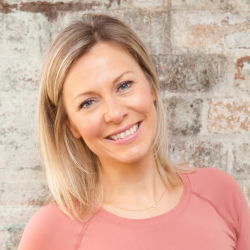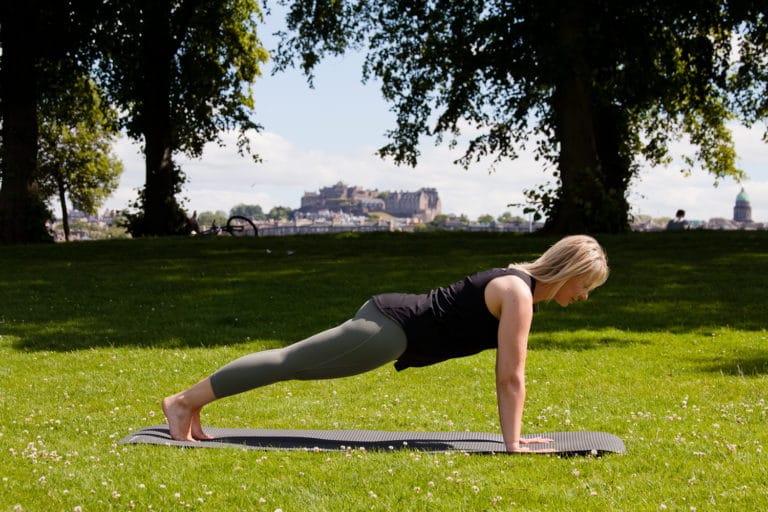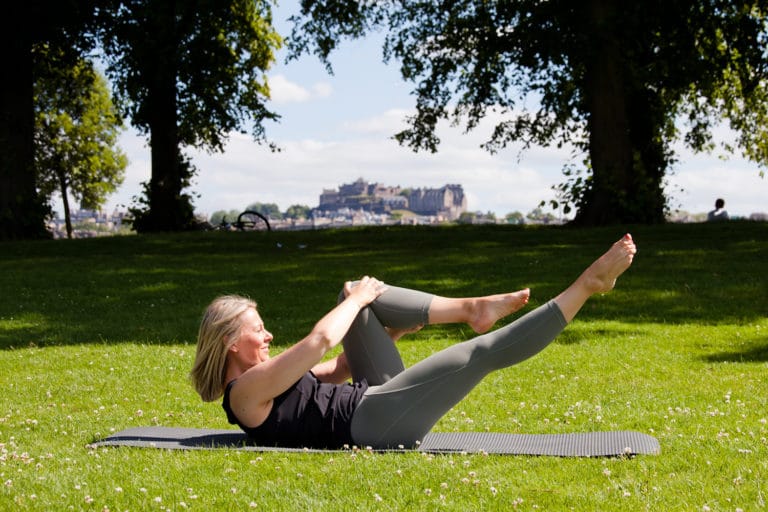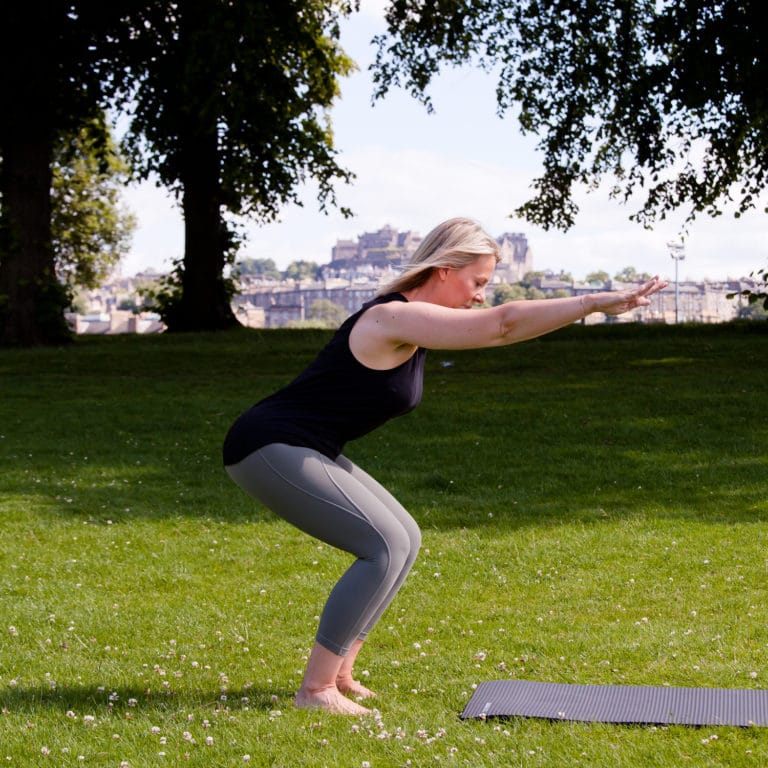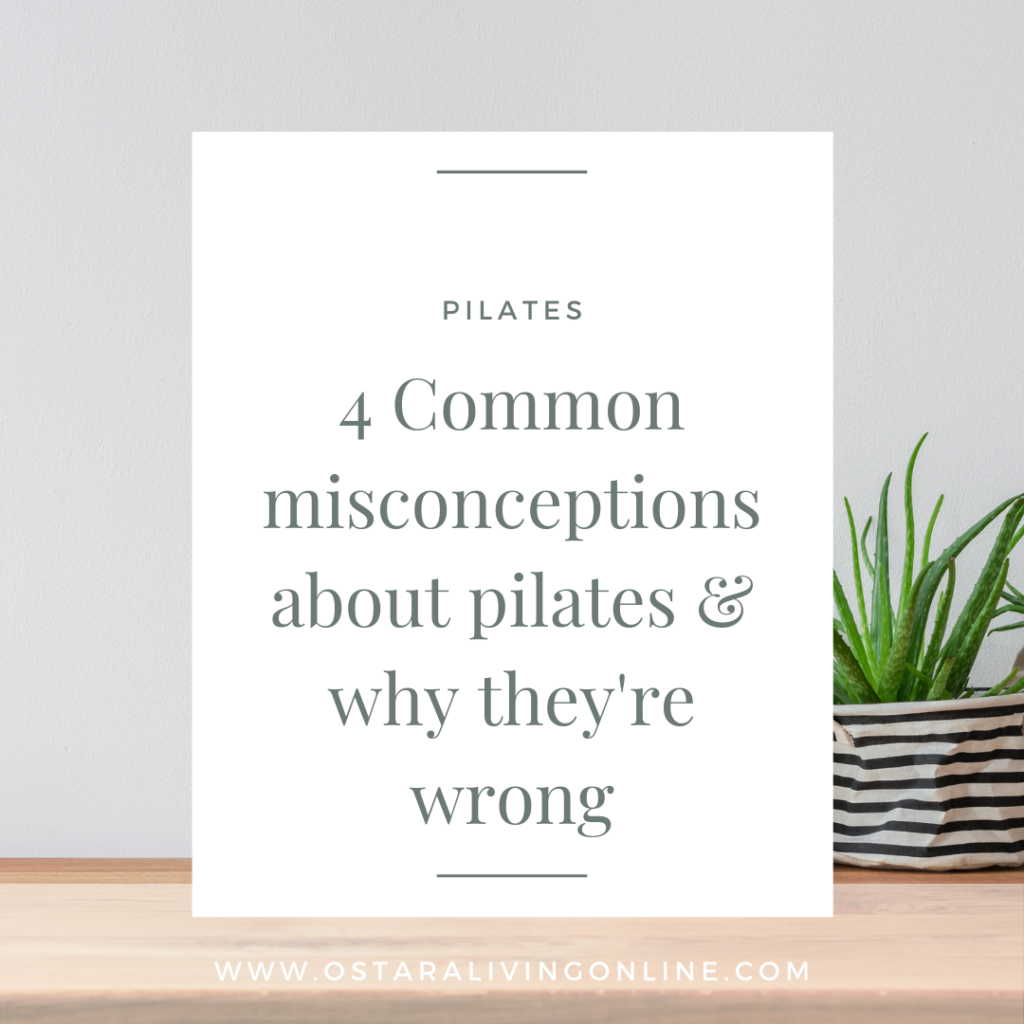
One – You have to be flexible to do pilates
Wrong….
When I first started pilates, I could barely bend over let alone do anything else! My hands would get to the tops of my thighs and then I would just get stuck meaning my flexibility was practically at zero! However, a few months in and I could start to see my hands getting lower and lower towards my toes whilst at the same time I could feel myself getting stronger and stronger as my core worked to support me on the way down to touch my toes; that balance of strength and mobility that pilates is so famous for.
ake it from me – and from the many clients I’ve taught over the years – you do not have to be flexible to take up pilates. Pilates trains flexibility. It does this mainly through dynamic stretches which means you are always actively moving.
Pilates exercises will encourage your muscles to lengthen, expand and release as you move, which improves the range of movement at your joint. At the same time it will actively work to strengthen the supporting joint structures helping to protect you from injury.
Done consistently, you will gradually see improvements in your mobility, your flexibility and your strength.
Two – Pilates is only for woman.
Wrong…
My first two pilates teachers were both male. Several of my teacher training teachers have been male. And in case you didn’t know, Pilates himself was male (first name Joseph).
Although on the surface of things, it would appear to attract a higher proportion of women, earlier in the year The Sunday Times ran an article on ‘Mat Men’ and called out the rise in the number of men turning to pilates for a variety of reasons including improving their mental health, rehab-ing an injury, solving a low back issue, improving their balance and coordination and using it alongside other training programmes.
The same article also cited Tiger Woods, David Beckham, Cristiano Ronaldo, Daniel Craig and Andy Murray as pilates converts; all of them using it to improve sports performance and protect from injury.
Over the years I have worked with many male clients both in a 1:1 and Group capacity and I currently teach a male orthopaedic surgeon who specialises in hip and knee replacements! He came to me because he’d heard such great things about how pilates can safely and effectively rehabilitate joints like the hip and the knee post operation and is also a very keen cyclist looking to improve both his flexibility and strength.
Pilates is for any body and every-body. It is non-competitive and a really smart way to look after your body and your mind regardless of your gender. And remember, you don’t have to be flexible to start it (see point one).
Three – You need lots of fancy equipment to do pilates
Wrong…
All you need is something soft or cushioned between you and the surface you’re working on making it both a cost effective and convenient work out – you can literally do it anywhere!
Although I don’t use a mat when I do pilates at home (my carpet provides enough cushioning for me), it is important that your bones and joints are protected from working on any hard surfaces so if you don’t have a soft surface at home, you’d need a mat around 1cm thick and these can be picked up really cheaply from places like Amazon.
Sometimes in class we use small equipment like the foam roller, an overball, a theraband or light hand weights, but these are all things that have been added to pilates over the years helping to give the matwork routine some variety, and whilst these are all brilliant and introduce a bit of fun to a class, they are not essential.
The original pilates matwork was just Joe on his mat and 34 body weight exercises and nothing else. This is now known as the ‘Classical Pilates’ repertoire.
Since lockdown, we’ve gone back to basics as we’ve not had access to my equipment and it’s been great just to focus on getting a work out using our bodies. No two classes of mine are ever the same and it’s amazing just how much strength you can build with just yourself.
There are pieces of pilates equipment you can progress to, like the Reformer or the Cadillac but you can happily stick with just yourself and your mat!
Like I say – cost effective and convenient.
Four – You need an hour of your time to do pilates
Wrong…
You can build strength, improve your posture and boost your energy in a very short space of time with the pilates method. It’s one of the reason’s why I love it so much – no need to find a very rare 60 minutes to workout! Try it for yourself = this 10 minute pilates for beautiful posture is a great place to start! Just roll out your mat and hit play!
I hope this has helped clear up any misconceptions you might have about pilates or are there any that I might have missed? Leave me a comment if you think I have and I’ll see if i can clear it up for you!
Happy Pilate-ing.
Love Julie x
P.S. Thinking of giving pilates a try? Then read this blog article I wrote for you on Getting started with pilates.
P.P.S. Looking to improve your flexibility? Then I have something coming for you very soon!
